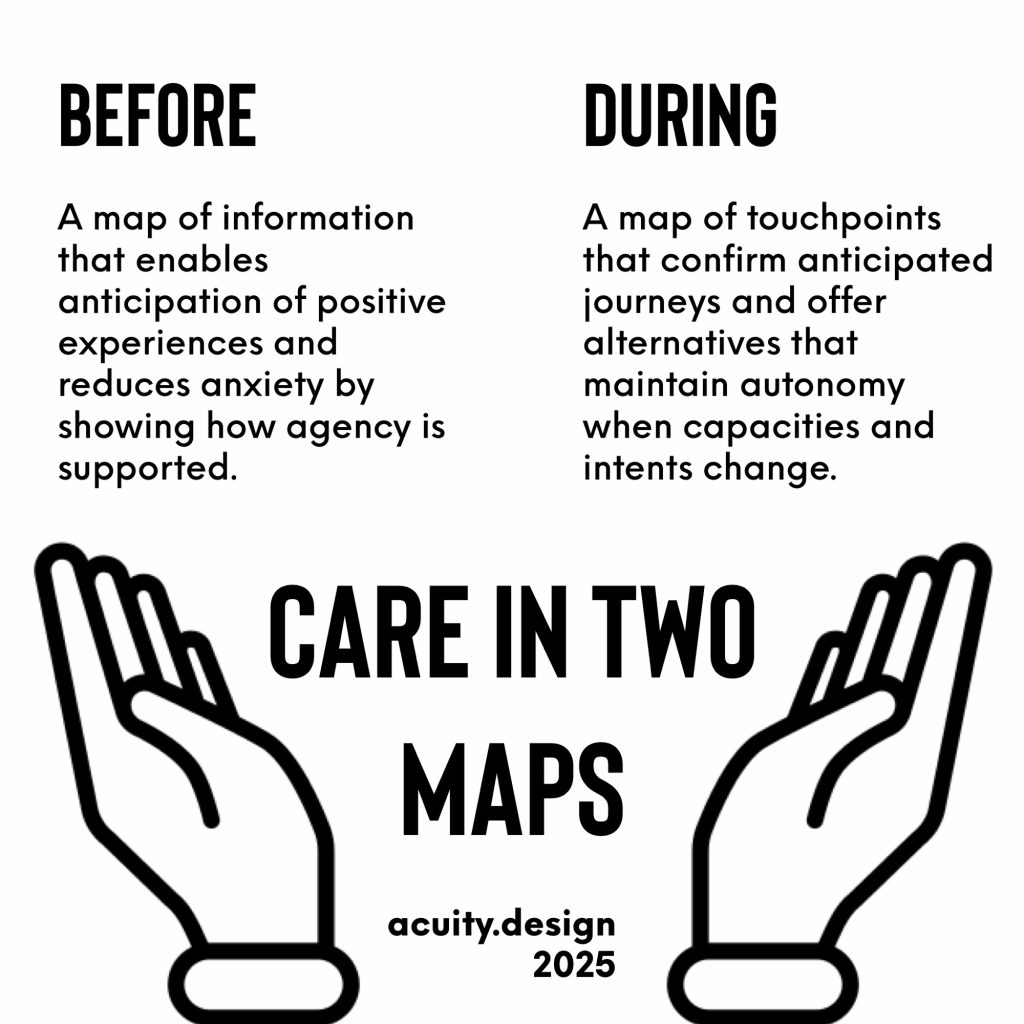
Thankfully I just lost a bid for some museum work. It was for a tactile map of a museum that opened a few months ago in London. The bid documentation was filled with red flags as a project.
What it did remind me of was how important it is to tell organisations that one map is never enough.
There is old-fashioned ideal of a single well-designed map as the solution to visitor attraction information provision. It is an ideal trapped somewhere between the over-confidence of visual designers that they can encapsulate so many information aspects in one image and the production scarcity and cost issues of pre-digital design and printing.
One map is never enough.
ABCD Wayfinding
From my experience of map design for accessibility, the bare minimum of maps required is two. I would recommend more but that depends on how well an organisation can communicate what it is offering to people with different needs and capacities.
Two is the minimum because it covers the critical difference about how people think about journeys and seek information before and during the experience.
I use ABCD Wayfinding theory to explain this.
Alignment
Boundaries
Centered
Direction
Before
A map of information that enables anticipation of positive experiences and reduces anxiety by showing how agency is supported.
This map is about the AB. Alignment and Boundaries. People need some frame to hold new information. Both a start point and edges. The Before map holds that sense of controlled introduction. Enough to plan, not too much to overwhelm and confuse.
People are anticipatory: we possess autonoetic consciousness. We all imagine and consider what might happen before we decide, before we go to a place. This is natural and it is filled with emotion as we sort out what appears positive and negative about any new journey. Is it even worth going if there is too much uncertainty and too much anxiety?
Maps enable agency and provide a sense of a Welcome when they show what is a there, what capabilities are offered to help a person meet their intent and how a visit will provide a positive achievement of some intent (not necessarily joyful, sometimes mundanely necessary).
Maps like this provided on a website or available before a visit are essential to many people. They create the desire to visit and the comfort that they will be supported, whatever their physical or cognitive capacities.
One Before map is good. Many versions are better as they focus on differing intents and differing capabilities required.
During
A map of touchpoints that confirm anticipated journeys and offer alternatives that maintain autonomy when capacities and intents change.
If people need the AB to consider and start a journey, it is the CD that is needed while they move. Centered and Direction covers two issues of Wayfinding and Wayshowing.
Centered is for the way humans navigate within a space, during a journey. We use Grid Cells and cognitive maps to seek out touchpoints that confirm our sense of the journey. Touchpoints can be architectural and designed but are often social and communal. People follow signs but people also follow people.
Direction is about the sense of showing the way in signs, guides and instructions. These are the design elements that organisations worry about the specification and provision of. They are important but they are only one part of any coherent Wayfinding system. Many places have excellent signage but it is never used because people never felt welcome to be there.
One During map can help people on site, during their journey. It can reassure them as they move, remind them what to look out for and offer options if they choose to change their purpose while there. Again, more maps can help offer more options. However, it is often better to use staff and training to hold this context shifting information rather than more and more pdfs, leaflets or webpages.
Maps help
Hopefully, what this helps you understand is that one map may seem a good corporate solution but it is neither human centered nor inclusive.
Assume two maps as the starting point and develop more thru conversations and usuability testing with groups of users with differing physical and cognitive capacities. What is needed and what is missing in information terms may well be imperceivable to you with your own sense of capacities.